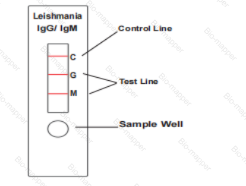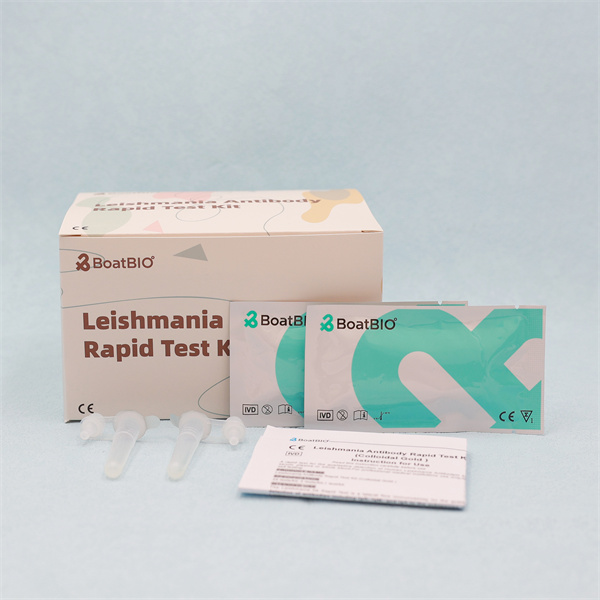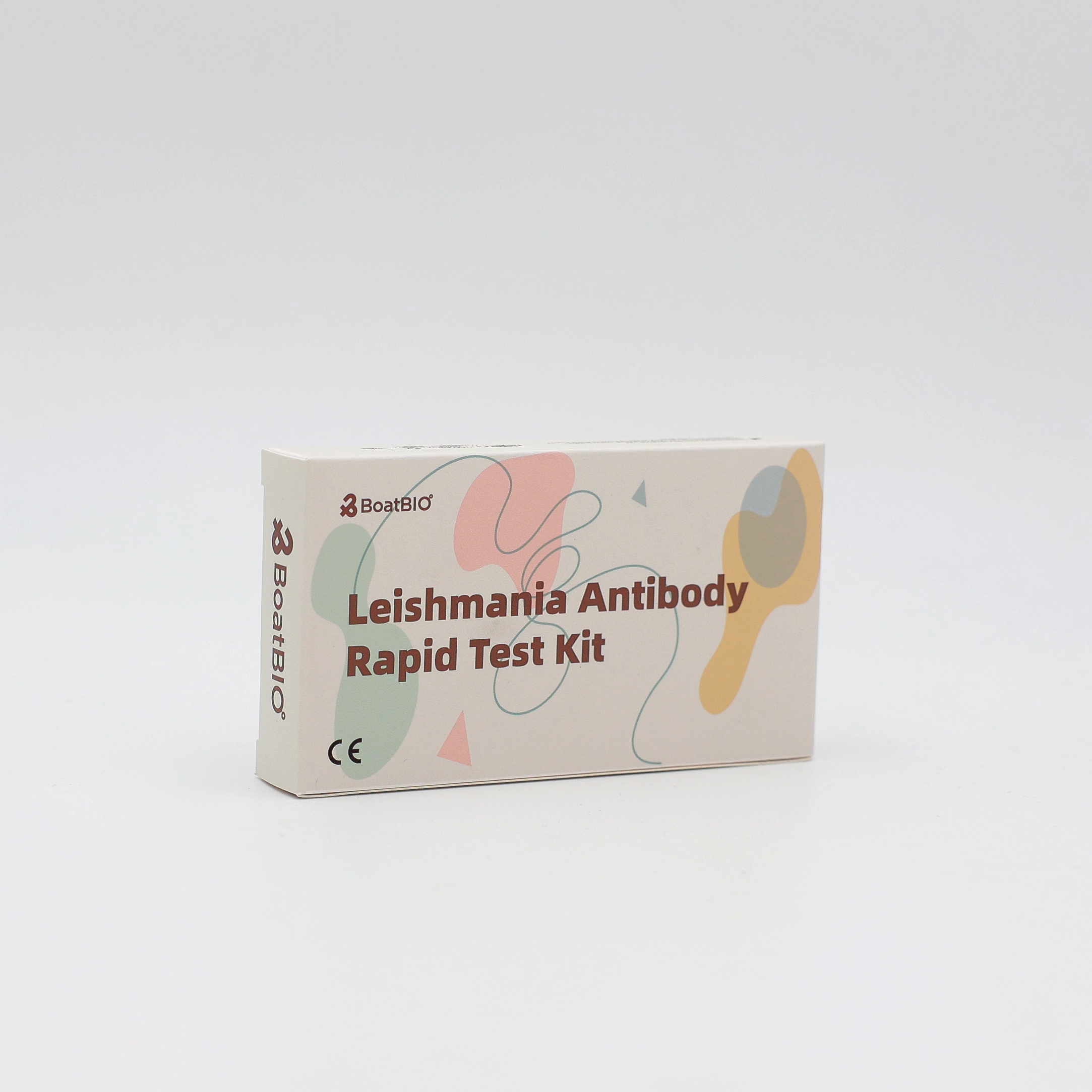SUMMARY AND EXPLANATION THE TEST
Visceral leishmaniasis, or Kala-azar, is a disseminated infection caused by several subspecies of the L. donovani. The disease is estimated by the World Health Organization (WHO) to affect approximately 12 million people in 88 countries. It is transmitted to humans by bites of the Phlebotomus sandflies, which acquire infection from feeding on infected animals. Though it is a disease found in poor countries, in Southern Europe, it has become the leading opportunistic infection in AIDS patients. Identification of L. donovani organism from the blood, bone marrow, liver, lymph nodes or the spleen provides a definite mean of diagnosis. Serological detection of anti-L. donovani IgM is found to be an excellent marker for the acute Visceral leishmaniasis. Tests used in clinic are included ELISA, fluorescent antibody or direct agglutination tests 4-5. Recently, utilization of L. donovani specific protein in the test has improved the sensitivity and specificity dramatically.
The Leishmania IgG/IgM Combo Rapid Test is a recombinant protein based serological test, which detects IgG and IgM antibodies to the L. Donovani simultaneously. The test provides a reliable result within 15 minutes without any instruments.
PRINCIPLE
The Leishmania IgG/IgM Rapid Test is a lateral flow chromatographic immunoassay. The test cassette consists of: 1) a burgundy colored conjugate pad containing recombinant L. donovani antigen conjugated with colloid gold (Leishmania conjugates) and rabbit IgG-gold conjugates, 2) a nitrocellulose membrane strip containing two test bands (T1 and T2 bands) and a control band (C band). The T1 band is pre-coated with monoclonal anti-human IgM for the detection of anti-L. donovani IgM, T2 band is precoated with reagents for the detection of anti-L. donovani IgG, and the C band is precoated with goat anti rabbit IgG.

When an adequate volume of test specimen is dispensed into the sample well of the cassette, the specimen migrates by capillary action across the cassette. The L. donovani IgM if present in the specimen will bind to the Leishmania conjugates. The immunocomplex is then captured on the membrane by the pre-coated anti-human IgM antibody, forming a burgundy colored T1 band, indicating a L. donovani IgM positive test result. The L. donovani IgG if present in the specimen will bind to the Leishmania conjugates. The immunocomplex is then captured by the pre-coated reagents on the membrane, forming a burgundy colored T2 band, indicating a L. donovani IgG positive test result.
Absence of any T bands (T1 and T2) suggests a negative result. The test contains an internal control (C band) which should exhibit a burgundy colored band of the immunocomplex of goat anti rabbit IgG/rabbit IgG-gold conjugate regardless of the color development on any of the T bands. Otherwise, the test result is invalid and the specimen must be retested with another device.




